Christmas is a time of warmth, joy, and celebration. From spruced-up Christmas trees and crowded markets to heavenly smelling batches of gingerbread cookies, the holiday spirit of December doesn’t put a foot wrong when it comes to captivating our senses. Now, here’s a fun fact to make things further interesting.
Did you know that the majority of Christmas traditions observed around the world actually originate from Germany? Curious to know what they are? You are just at the right place, then. Hop along as we take you on a journey through the most popular German Christmas Traditions out there!
Krampus Night (Krampus Nacht):- The Inspiration For The Krampus Movie
Now, we all know that the well-behaved children are treated to presents and chocolates from St Nicholas. But, what about the naughty ones? They are taught a hard lesson by Krampus, the Saint’s devil assistant. In Southern Bavaria, the residents celebrate St Nicholas’ Night as Krampus Night.
Men impersonate Krampus by putting on devilish clothes and ghoulish masks and patrol the streets. Rallying together, they move from one house to another, banging on doors, and are occasionally invited in by parents who wish to frighten the naughtiness out of their children.
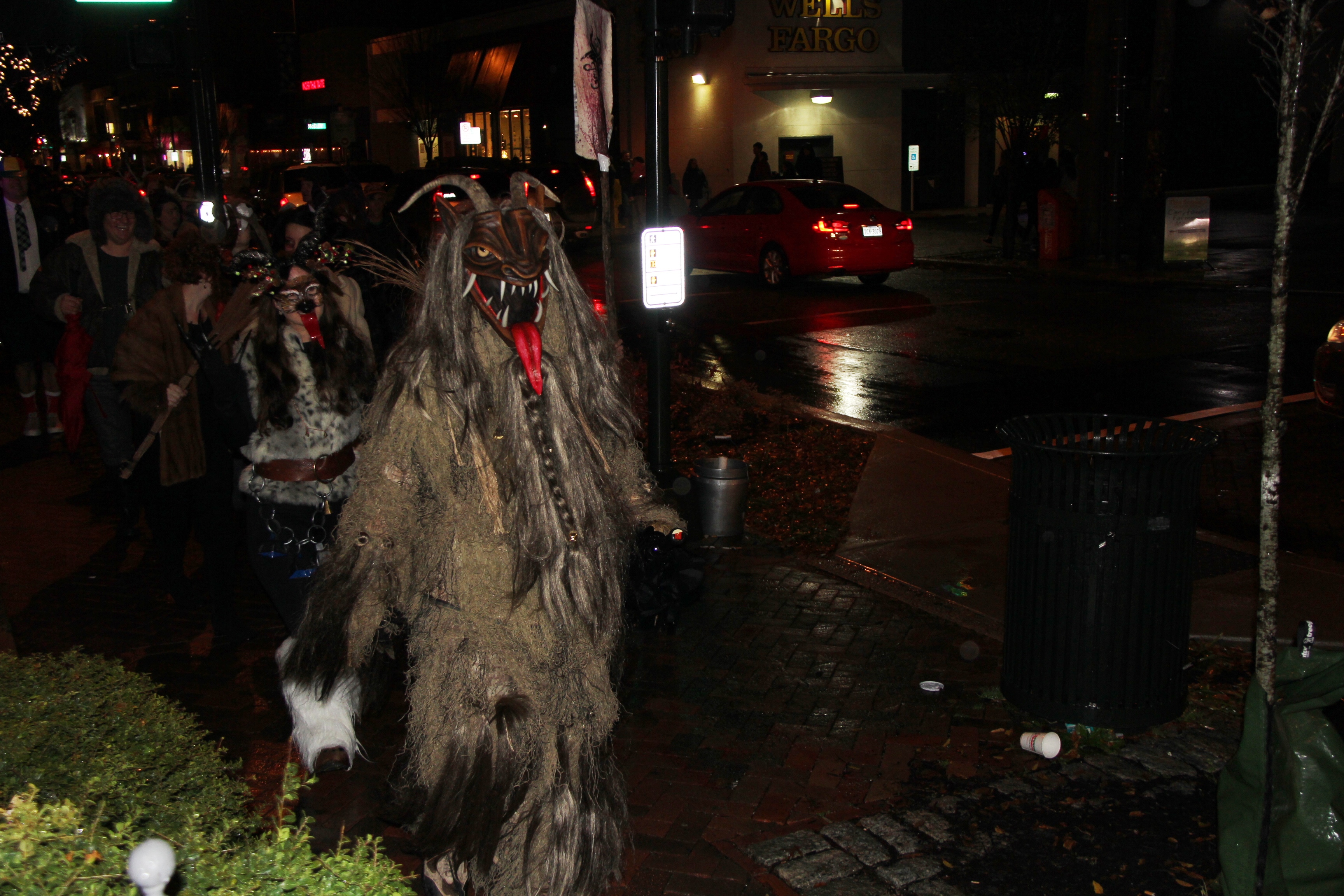
By Eli Christman, CC BY 2.0, Link
St Nicholas Day (Sankt Nikolaus Tag): The Legend of St. Nicholas And Knecht Ruprecht
Celebrated on December 5th, St. Nicholas Day is an occasion of great joy for German children. According to traditions, on the night of the 5th, children place their cleaned and polished shoes outside the doors of their rooms before going to bed. The next morning, they wake up to the delightful sight of chocolates, fruits, and nuts, as well as other presents filling their shoes to the brim. All thanks to the nightly visit of St Nicholas and his sidekick Knecht Ruprecht!
While in other parts of the world Santa Claus is looked up to as the patron saint of Christmas, St Nicholas reigns over the hearts of children and elders alike in Germany.
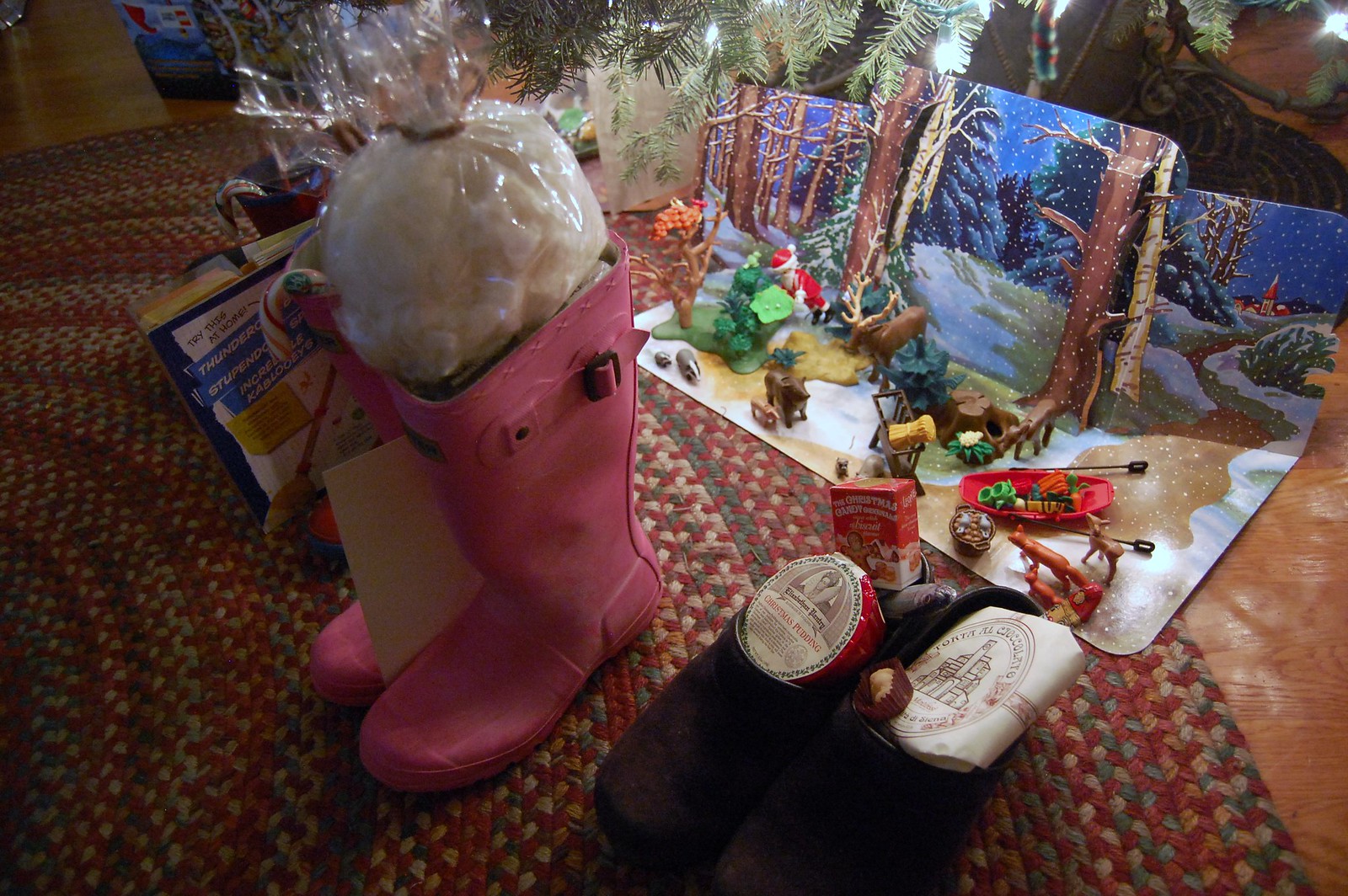
Advent Wreath (Adventskranz): and the Symbolism of the Advent Candles
This is among the most popular German Christmas traditions in which families put out a wreath on their living room tables during the build-up to the holiday season. Usually, families observe this tradition on the fourth Sunday before Christmas.
The Advent wreath comprises four candles placed on a bed of pinecones, dried flowers, berries, and other ornaments. The candles on the wreath symbolize hope, joy, love, and peace. Some even light a fifth candle by the name of Christ candle. Families mark the occasion by singing carols, munching on cookies and fruits, and watching movies.

By Jonathunder, CC BY-SA 3.0, Link
Advent Calendar (Adventskalendar)
Thus calendar is a special calendar that serves as a countdown to Christmas. The four weeks that precede it are a part of this calendar and known as the Advent season. This practice is believed to have originated from 20th century Germany.
Every Advent calendar consists of 24 little rectangle windows, one for every day of December leading up to the 25th eventually. A single window is opened on each day of the season to reveal chocolates, presents, and poems. As people flock to shops to grab these calendars or fetch the materials to create their custom ones, the markets end up getting flooded during this season.
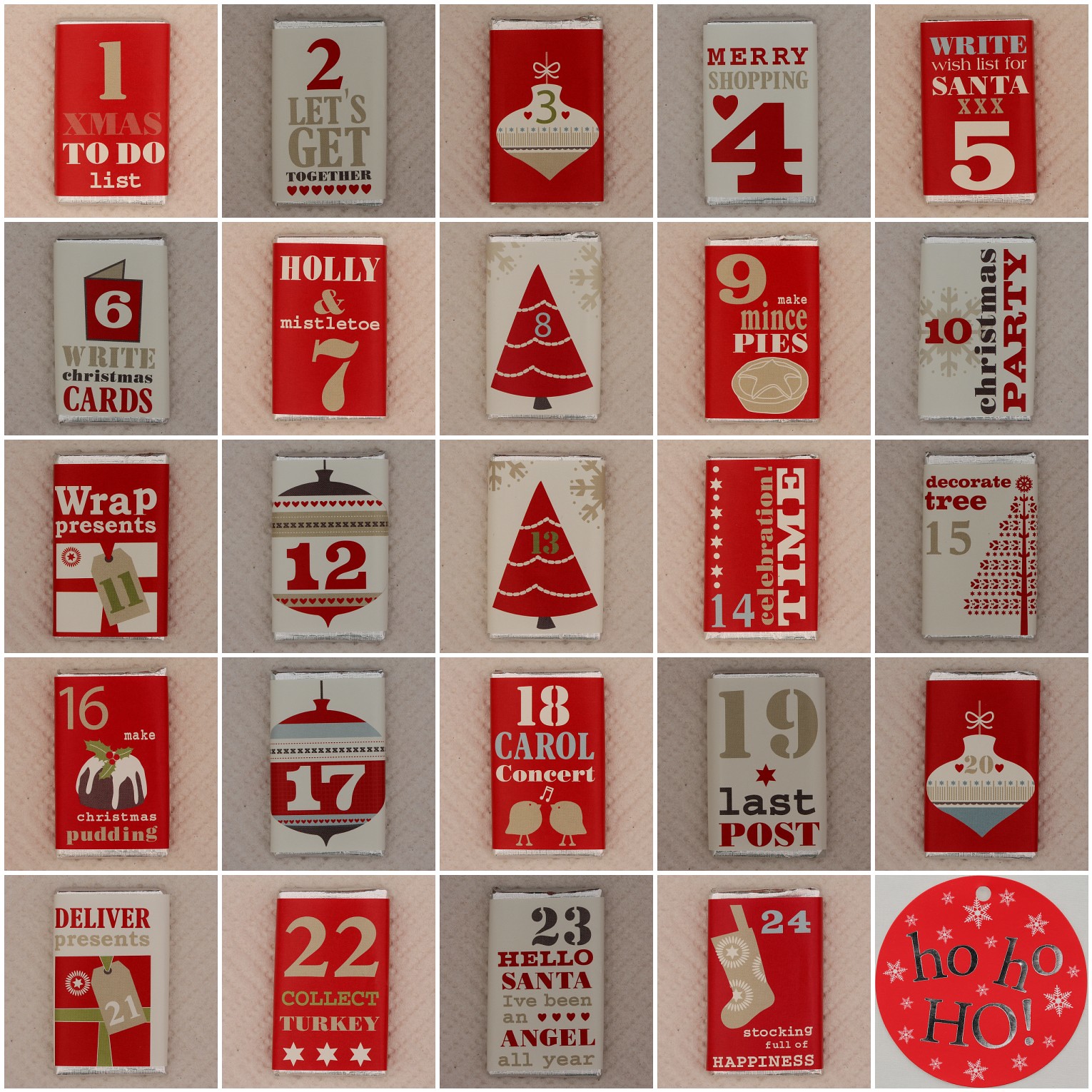
Christmas Market (Weihnachtsmarkte): The Inimitable German Christmas Market
Whether you need a gorgeous German Christmas tree or the quirky German Christmas pickle, you’ll find everything in the annual Christmas markets of Germany. Yes, you guessed it, the magical concept of Christmas markets was also first introduced by the Germans!
People flock to these markets in large numbers not only for Christmas shopping but also to lay claim to the choicest baked goods and to sip from piping hot cups of coffee and hot chocolate. The festive spirit that grips the thousands of Weihnachtsmarkte across various parts of Germany is all-consuming and highly contagious.

By SchiDD, CC BY-SA 4.0, Link
Epiphany And The Sternsinger
The Germans don’t wish for their Christmas season to come to an end. So much so that in certain parts of Germany, celebrations linger as late as January first week. January 6th, in particular, is observed as a day of religious feast called the Epiphany or Das Dreikonigsfest, which translates to “three kings festival”.
On this occasion, kids dress up as the three Magis and travel door to door asking for donations for different children’s causes. In the process, they also sing songs due to which this day is also known as Sternsinger, or “star singer”.
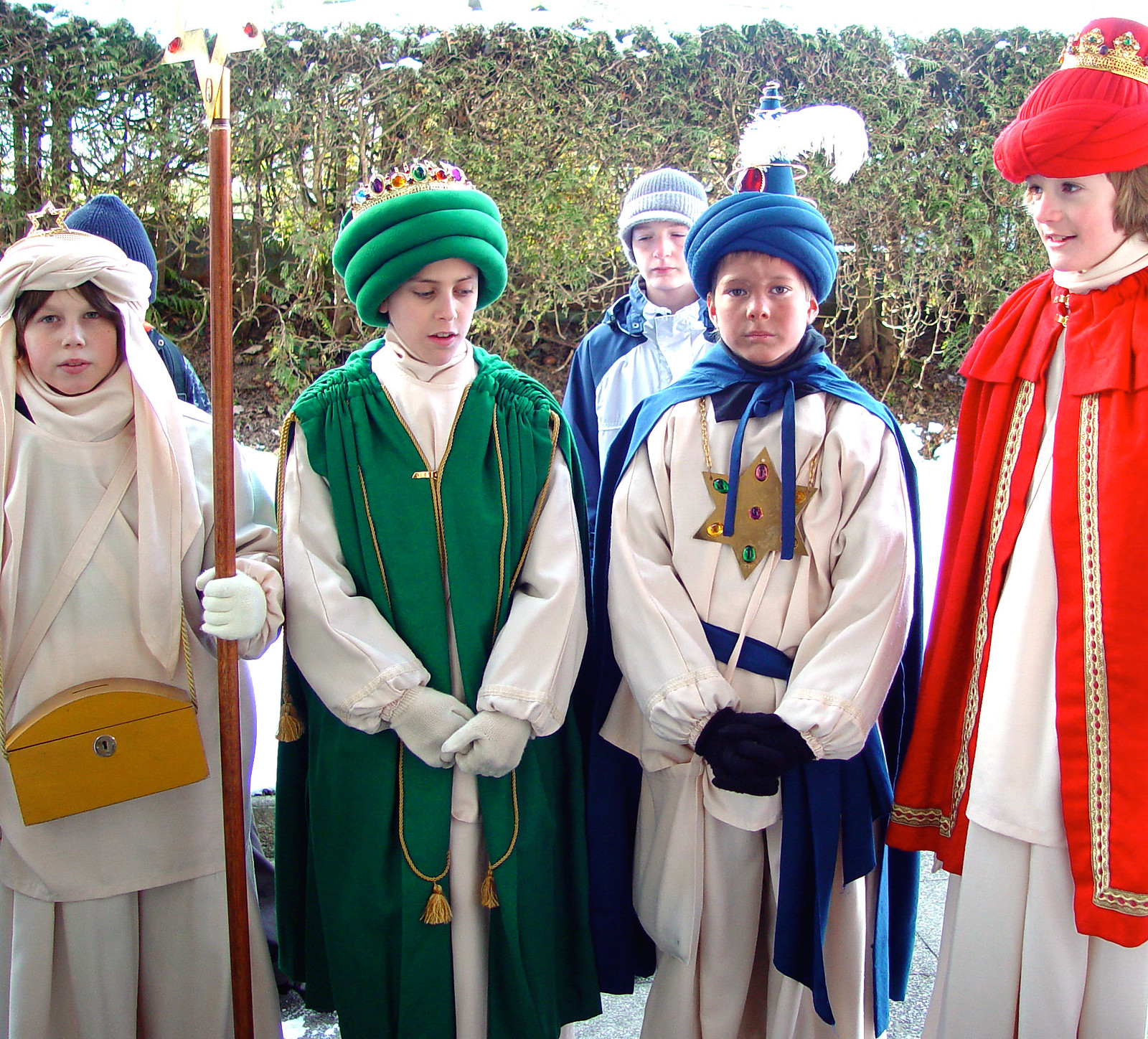
Fire Tong Punch (Feuerzangenbowle)
While the name Feuerzangenbowle might not roll easily off the tongue, the beverage that it represents is as easy on the taste buds as it gets. A classic German Christmas drink, the Fire Tong Punch is equally appealing to the eyes, as well. It is made by mixing a generous portion of rum with mulled wine. The resulting concoction is then set in flames.
The best way to enjoy it? With friends and families in front of a TV screen watching the 1944 cult movie Die Feuerzangenbowle. Make a tradition out of it, if you will.

By Thorsten Hartmann, CC BY-SA 3.0, Link
Mulled Wine (Gluhwein)
This traditional winter drink is a staple of the holiday season in Germany. The perfect fix for a cold day, nothing quite reels in the festive spirit as a steaming hot mug of mulled wine or Gluhwein. A variation of this classic beverage is Gluhwein mit Schuss, which involves adding a shot of brandy to the hot mulled red wine.
Gluhwein is served in ceramic mugs in almost every major city of Germany and is a massive hit at the Christmas markets. Although there are slight variations, the designs on these mugs usually portray either the markets or the respective historic city centers.

Christmas Stollen: The Quintessential Christmas Dessert
How can any Christmas be complete without a serving of the classic stollen? For the uninitiated, Stollen is a sweet bread or cake that is made up of spices, nuts, and candied fruit. Occasionally, it is also served with zest, marzipan, or powdered sugar.
This delicacy was first produced in the German city of Dresden in the late 1500s. Since then, it has continued to grace Christmas dinner tables and markets alike without fail. Many believe that the stollen is given its distinctive loaf shape on purpose to resemble an infant Jesus in swaddling clothes.

By Public Domain (Pixabay), CC0, Link
Christmas Angels (Weinachtsengel): The Most Loved Wooden Christmas Ornaments
Even though we love all our festival traditions, some are closer to the heart than others. And decorating our houses and trees with Christmas angels certainly features in that special list. These angels are, hands down, the most adored Christmas ornament out there and a top draw at the markets, as well. Commonly fashioned out of wood, these trinkets depict various angels playing their musical instruments.
A word of caution — as adorable as these ornaments seem to be, please keep them out of reach of your pets and toddlers. You wouldn’t want a medical emergency interrupting your holiday season.
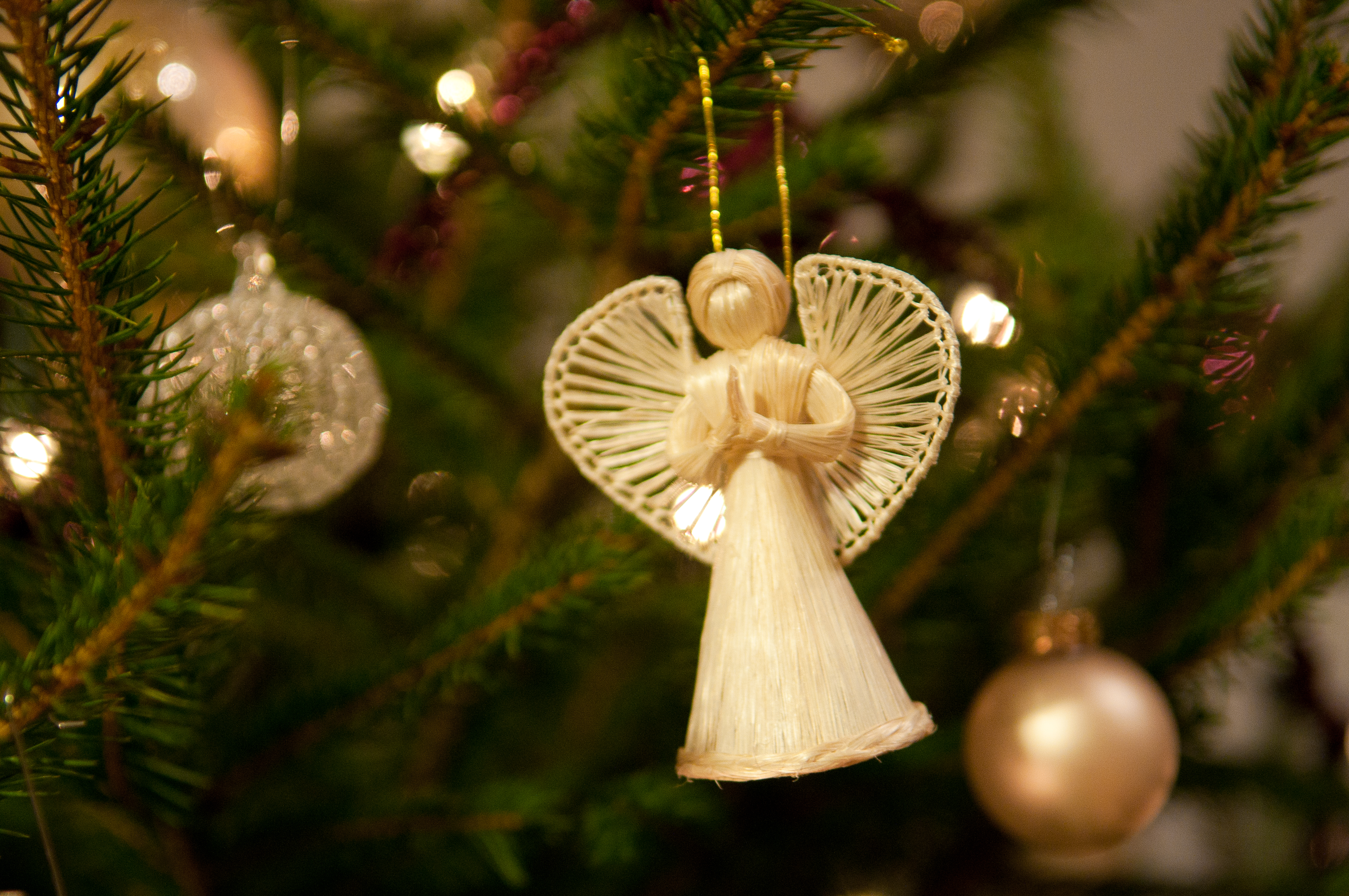
By Michal Osmenda, CC BY-SA 2.0, Link
Christmas Tree
Besides presents and good food, another major aspect that unites families during Christmas is decorating a Christmas tree together. Once again, we have the Germans to thank for this. This tradition traces its roots back to 16th century Germany. During this time, people first started bringing small firs into their homes and adorned them with fruits, paper flowers, and trinkets.
Legend has it that 16th-century theologist and Protestant reformer, Martin Luther, was the first person to add candles to a Christmas tree. Inspired by the sight of a tree glistening in the moonlight, he wanted to recreate the same for his family.
Lebkuchen
Following on the heels of the wonderful stollen is the utterly delightful lebkuchen. Somewhat similar to gingerbread, lebkuchen is a baked German treat that usually contains spices, nuts, and honey.
Although it is a traditional Christmas delicacy, lebkuchen is extremely sought-after during other times of the year as well. If you enter any festival, fair, or souvenir shop at random in Germany, you’ll surely come across this baked wonder. It is among the most sought-after things in the holiday markets as well. Some varieties of lebkuchen even have special messages inscribed on them. Consider this your holiday season fortune cookie, if you may.
By Silar, CC BY-SA 4.0, Link
Christmas Eve (Heiliger Abend)
Do you know what the true highlight of Germany’s holiday season is? It’s the day of December 24th, the Holy Eve. The Holy Eve holds special importance for the Germans on multiple grounds. For starters, it is only on December 24th that German children get to watch their illuminated trees for the first time. People exchange presents and attends Christmas masses with their families.
Heiliger Abend also has a traditional meal earmarked just for it — the Weihnachtsgans or the Christmas goose. This delicacy is usually served with a side of red cabbage and dumplings.

Santa Claus (Der Weihnachtsmann)
Although the German consider St Nicholas as their Christmas patron saint, they are not entirely oblivious to Santa Claus. Der Weihnachtsmann role here is fairly unusual when compared to America and other Christian countries. In northern Germany, Santa Claus brings presents to the children in the same manner as he does in other parts of the world.
However, in the south, this responsibility is taken up by St Nicholas. Here, even though they regard Santa Claus as Father Christmas, they don’t keep out stockings for him as per the custom tradition.

Christmas Pickle (Weihnachtsgurke)
Now, this is a tradition that is relatively unknown in America. In Germany, however, the Christmas pickle ornament holds a special place in the hearts of its people. What makes the legend of the Weihnachtsgurke interesting is that it has multiple versions to its name.
The most common and widely accepted one goes something like this — on the night of December 24th, parents hide a glass pickle ornament within the boughs of the decorated tree. The focus then shifts to the morning of the 25th, when children are assigned the task of hunting down the hidden pickle. The first child to spot it gets an extra present from St Nicholas.

By Steven Miller, CC BY 2.0, Link
German Christmas traditions play a huge role in making the festival a lively and incredibly fond affair. Now that you know all about them, how do you retain them in memory? By washing this information down with a glass of eggnog, of course! Oh, and if you were planning to organize a Christmas trivia night, well, here’s your cue.
